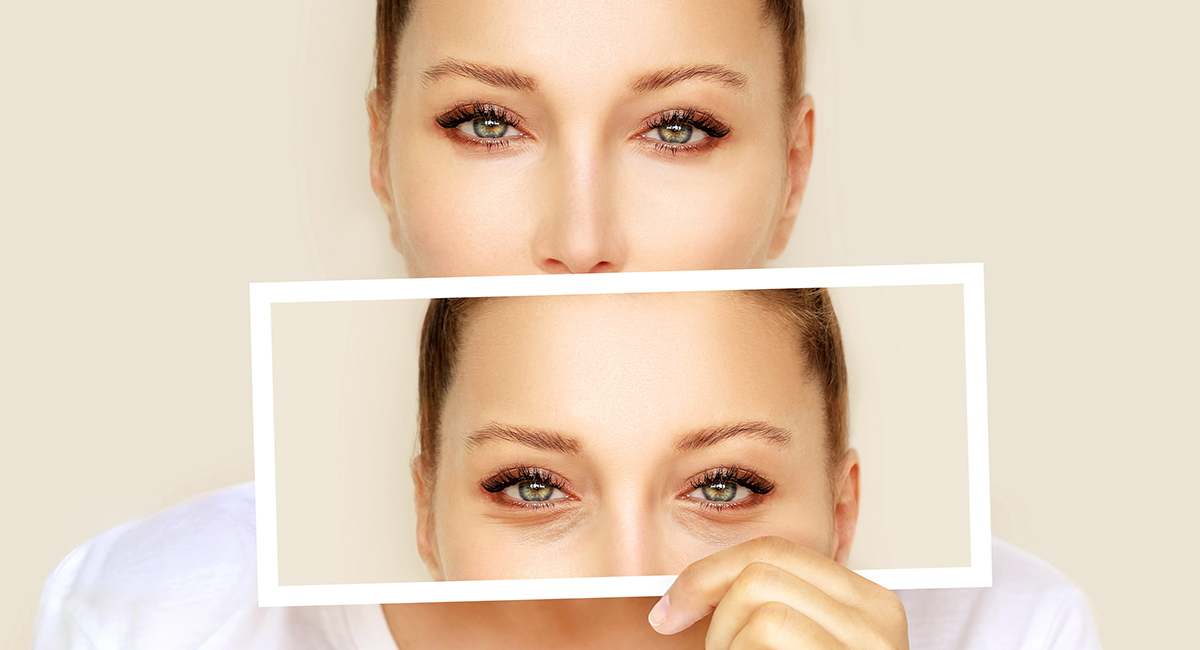

COURTESY PHOTO
A first impression is based largely on the appearance of the eyes and face. The goal of facial aesthetics is to improve the look of these areas, increasing the patient’s self-confidence and creating a positive impression.
Florida Eye Specialists & Cataract Institute houses one of the premier facial aesthetic centers on the west coast of Florida. It’s called Florida Eye Aesthetics, and it provides surgical and nonsurgical aesthetic services for the eyes and face.
Robert J. Applebaum, MD, MBA, and Norberto Mancera, MD, are fellowship-trained oculoplastic surgeons within Florida Eye Aesthetics. They specialize in plastic and reconstructive surgery of the eyes and face, including the eyelids, eyebrows, forehead, cheeks, lips and lacrimal (tears) system.
One of the most common procedures performed by these specialists is blepharoplasty, a procedure to correct dermatochalasis, or excess skin on the upper eyelids. This condition can cause a person to appear tired, angry or unapproachable, which does little for a first impression.
“The eyes are a very aesthetic feature of the face,” Dr. Mancera observes. “When we look at someone, be it in a photo or in person, the first area we look at is the eyes. Having excess eyelid skin can make a big impact on how we perceive that person.
“By removing the surplus skin from the upper eyelids, we can give patients a refreshed and rejuvenated appearance, helping them make a good first impression.”
Blepharoplasty can also reduce the amount of excess skin that hangs low on the eyelids. That excess skin can interfere with peripheral vision, which is the area seen to the sides when looking straight ahead. The extra skin can also be heavy, which can lead to headaches.
“Blepharoplasty is a simple, in-office procedure that doesn’t take long to complete and has a quick recovery,” Dr. Mancera assures. “Once the excess skin is removed, the tiny incisions we make to excise the skin are closed with stitches, which are removed one week later in the office. The stitches are made in the natural crease of the eyelid, so scarring is minimal.”
Blepharoplasty can also be performed on the lower lids, Dr. Applebaum adds.
“Lower eyelid blepharoplasty primarily involves the removal of fat and sometimes skin from the lower eyelids,” he informs. “This procedure is often done along with laser resurfacing of the lower lids to tighten the skin and reduce the appearance of fine lines and wrinkles.”
“The bags that form under the eyes can become very prominent with time, causing a shadowy appearance or puffy look,” Dr. Mancera notes. “During a lower lid blepharoplasty, the excess fatty tissue under the eyelids is debulked. Sometimes, some skin is removed as well to make the skin tighter, which decreases the appearance of bags under the eyes.
“In many cases, when patients are getting an upper lid blepharoplasty, they realize that it’s advantageous to have their lower lids done at the same time. This allows them to heal from one surgery, but provides the benefits of both.”
Other surgeries commonly performed by Dr. Mancera and Dr. Applebaum to improve eye and facial aesthetics include eyelid and eyebrow lifts, face-lifts, neck lifts, and lip lifts.
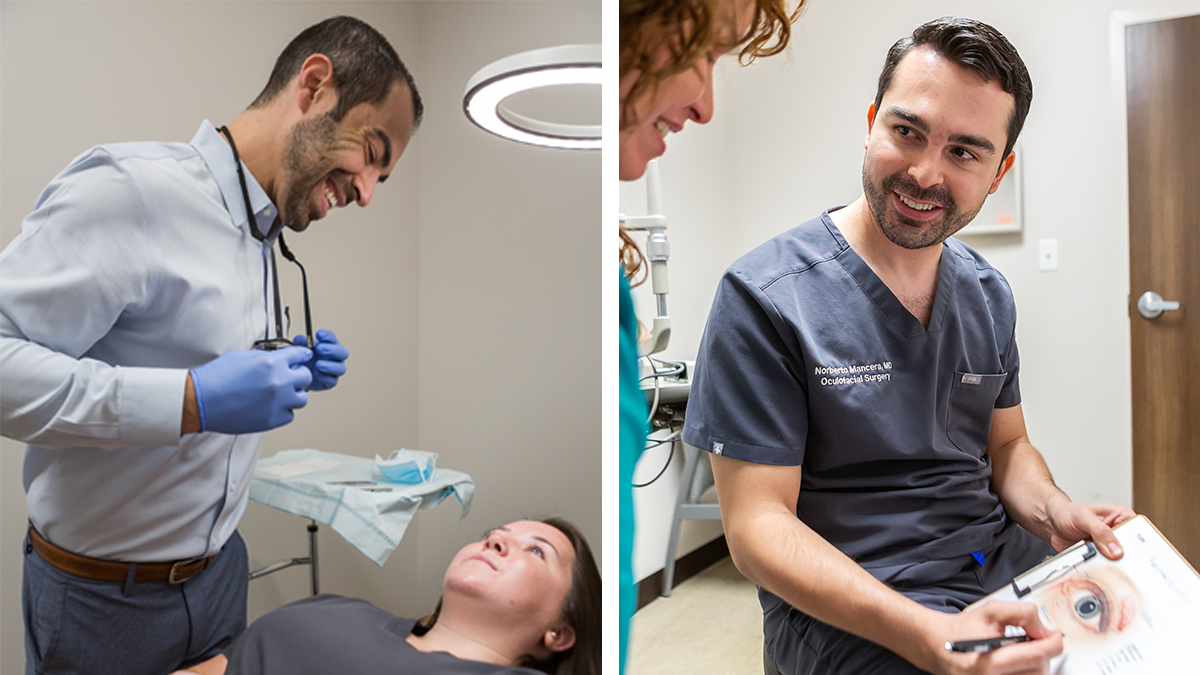

JORDAN PYSZ / iFoundMyDoctor.com
At Florida Eye Specialists & Cataract Institute, Dr. Applebaum, left, and Dr. Mancera provide a full scope of aesthetic services, both surgical and nonsurgical, to improve the appearance of the eyes and face.
Nonsurgical Rejuvenation
Dr. Applebaum and Dr. Mancera also offer a full scope of nonsurgical services to improve the appearance of the eyes and face. One is a laser resurfacing procedure using Florida Eye Aesthetics’ new Edge CO2 laser. The laser can flatten acne scars and take years off the face by correcting sun damage.
“Some folks aren’t ready for an incisional surgery, so CO2 laser resurfacing is perfect for them because it provides an opportunity for nonsurgical facial rejuvenation,” Dr. Mancera asserts. “CO2 laser resurfacing works by making pinpoint laser incisions in the skin. The incisions heal by revving up the natural production of collagen, which ultimately tightens the skin.”
Collagen is the main structural protein in skin.
“CO2 laser resurfacing is like a high-grade medical skin peel,” Dr. Applebaum adds. “It’s used to treat fine lines and wrinkles. It helps with skin laxity, or looseness, and for evening out skin tone. We can use it anywhere on the face and neck.
“The CO2 laser causes thermal damage to the skin and underlying tissues that causes peeling of the skin. What remains is healthy skin that heals the treated areas through neocollagenesis, which is the development of new collagen. Patients are left with a new surface layer of facial skin and a rejuvenated, more youthful appearance.”
It takes about 10 days to fully recover from a CO2 laser resurfacing.
“During this time, the old skin peels off and new, more fresh and glowy skin comes to the surface,” Dr. Mancera says. “The effects continue for about six months after the collagen level has been increased.”
Another nonsurgical facial rejuvenation treatment offered by Florida Eye Aesthetics is intense pulsed light (IPL or photofacial). This technique uses various wavelengths of light energy to treat darkly pigmented areas, such as age spots and sunspots, as well as uneven skin tone.
“IPL is an energy-based procedure that uses particles of light to help remove sunspots and age spots,” Dr. Mancera expounds. “It also helps to a degree with collagen activation. And in clinical studies, it has been shown to improve symptoms of dry eye disease, including dryness, irritation, redness and sensitivity to light.”
IPL is also used to treat rosacea, a chronic skin condition that primarily affects the face by causing redness, visible blood vessels and small, red, pus-filled bumps resembling acne.
“We use IPL to treat rosacea because it breaks up the blood vessels under the skin that can cause the face to appear flushed or red,” Dr. Applebaum notes. “The light therapy can be applied to the hands, arms and other areas of the body that have excess pigment or an uneven skin tone.”
Toxins and Fillers
Dr. Mancera and Dr. Applebaum provide a range of neurotoxins to minimize fine line and wrinkles as well as facial fillers to increase volume in the cheeks, lips and nose. These options can help reverse changes associated with aging.
“There are several neurotoxins that all work very well. BOTOX® Cosmetic is probably the most familiar,” Dr. Applebaum says. “BOTOX Cosmetic is a synthetic toxin that’s altered so it’s nontoxic to the body of a healthy person. It blocks the release of neurotransmitters that trigger muscle contractions and lead to dynamic wrinkles.”
“Fillers, on the other hand, work on the wrinkles that are present at rest and revolumize areas of the face that deflate as we age,” Dr. Mancera details. “Fillers reestablish the fullness and healthy appearance of the soft tissues of the face.”
Among the fillers used by the Florida Eye Aesthetic’s physicians are JUVÈDERM®, Restylane® and VERSA®. Many fillers contain hyaluronic acid, a substance found naturally in the body that helps restore volume and hydration to the skin.
“The various fillers are like different paintbrushes for an artist,” Dr. Mancera relates. “Each one has a specific density, thickness and cohesiveness. Depending on the part of the face we’re working on, we use a different type of filler.
“A common filler comes from the JUVÈDERM family. We use these fillers in the lips to add volume and shape. We use them in the cheeks to provide support to the midface, which is a common site for deflation. This acts as a nonsurgical face-lift.”
Fillers can also enhance the jawline to give people a more angular appearance. For men, jaw enhancement can masculinize the face, and it can give women a slimmer appearance to the face and a more defined jawline.
“We can also use fillers to perform what’s called a liquid rhinoplasty, or nonsurgical nose job,” Dr. Applebaum discloses. “This is for people who are unhappy with the appearance of their nose but aren’t ready for surgery.
“During a liquid rhinoplasty, we inject a filler into areas of the nose that have lost volume or where there’s asymmetry. The filler creates more fullness in the nose and a symmetrical appearance. It also results in a slimming effect for a more aesthetic look to the nose.”
Dr. Applebaum and Dr. Mancera stay on the leading edge of facial aesthetics. They’re always seeking out and learning new techniques and procedures to provide the most advanced care for the eyes and face.
“We are continuously improving what we can do for our patients in terms of their appearance and self-confidence,” Dr. Applebaum expounds. “Aesthetics is a rapidly expanding field with growing popularity. We’re always working at the forefront of facial aesthetics in both surgical and nonsurgical procedures to enhance our patients’ experiences.”
-Dr. Applebaum
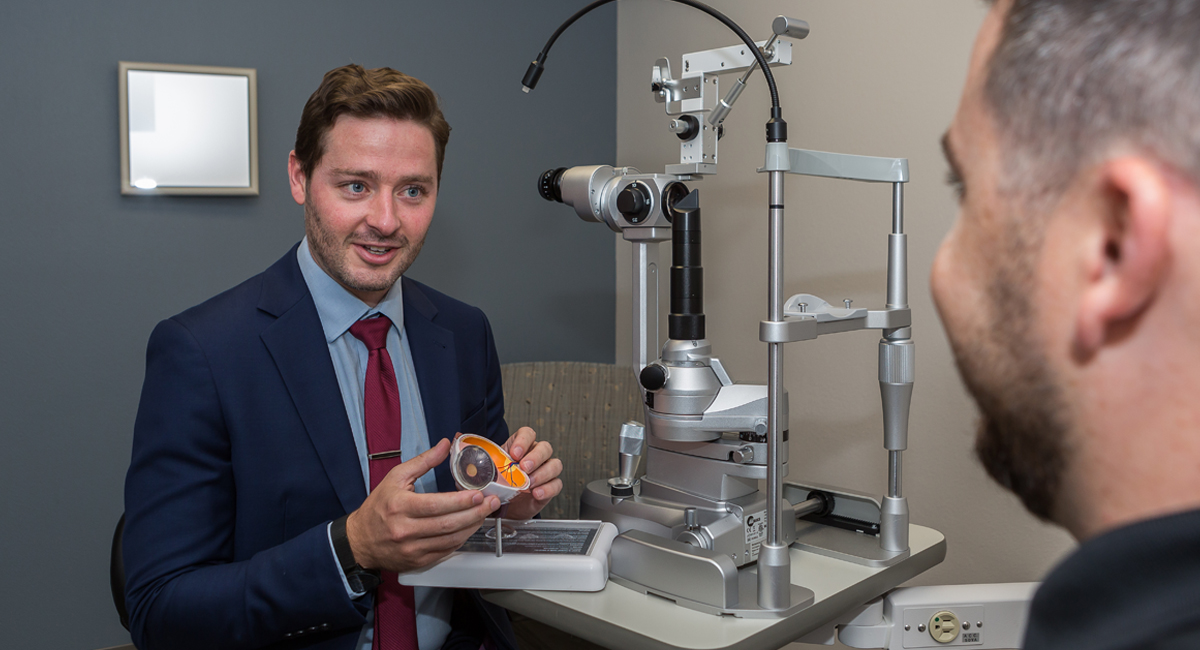

JORDAN PYSZ / iFoundMyDoctor.com
Dr. Donovan often recommends corneal cross-linking for his patients with keratoconus, a condition that causes the cornea to thin, bulge and take on a cone-like shape that affects vision.
Cone-Shaped Corneas
In addition to aesthetic services, Florida Eye Specialists & Cataract Institute also provides leading-edge treatments for a multitude of eye disorders. One is keratoconus, a condition in which the cornea, the clear layer in the front of the eye, gradually thins and bulges forward, causing it to take on a cone shape and affecting vision.
“Keratoconus is typically diagnosed in teenagers and people in their 20s,” informs Chris Donovan, MD, a fellowship-trained corneal, cataract and refractive surgeon at the institute. “It’s often picked up when a younger person becomes increasingly more nearsighted or has increasing astigmatism over time.”
An evaluation for keratoconus begins with a corneal topography exam, which measures the size, shape, power and thickness of the cornea. The test can determine whether a patient has an abnormal corneal curvature. With keratoconus, there’s usually an inferior corneal steepening, when the lower portion of the cornea becomes more curved than normal.
“The problem with keratoconus is that it progresses over time, so the steepening continues to advance as years go by until about age 50.” the doctor reveals.
One reason this change stops is that the cornea is repeatedly exposed to ultraviolet light from the sun. This UV light causes the fibers in the middle layer of the cornea (stroma) to bond. As these bonds form, they strengthen the cornea and stabilize its shape.
“Since most patients diagnosed with keratoconus are in their teens and 20s, they haven’t had 30 years of UV exposure to stabilize the cornea,” Dr. Donovan says. “If not stabilized, the cornea can become too irregular or thin. Fortunately, there are three approaches we can employ.”
Keratoconus Treatment
An advanced treatment for keratoconus is corneal cross-linking. This is a minimally invasive procedure aimed at accelerating the bonding of protein fibers in the stroma. Those bonds lead to tissue stiffness and strength, the doctor notes.
“UV light from the sun is a natural way to cross-link the cornea, but if we desire to hasten the process we can do cross-linking procedurally,” Dr. Donovan expounds. “This procedure takes about an hour and a half, is performed in the office, and requires no IV sedation or anesthesia.
“First, we numb the eye, then we create a small abrasion on the surface of the cornea. After that, we soak the eye in riboflavin, or vitamin B2, eyedrops for a half-hour. The patient then sits under a UV lamp for about a half-hour. The riboflavin photosensitizes the cornea to the UV light so more bonds form.
“It’s a gentle process with no pain, and patients go home the same day with a bandage contact on their eye to help with discomfort and promote healing.”
Another way to address keratoconus is with hard contact lenses.
“These lenses can actually reestablish a nice, smooth symmetrical shape to the cornea,” he discloses. “They act as a second surface for the eye and compensate for the irregularities of the cornea. They can improve vision clarity quite a bit for patients with keratoconus.”
The other treatment option is a full-thickness corneal transplant, which means all five layers of the cornea are replaced with donor tissue.
“During a corneal transplant, we make a full-thickness incision into the eye, which involves some surgical risk,” Dr. Donovan explains. “The transplanted cornea requires a lifetime of care, and patients often still need hard contact lenses afterward.
“So, our overwhelming preference for keratoconus is to perform corneal cross-linking to provide stability to the cornea and prevent progression, and not perform a transplant. And it allows patients to keep their natural corneal tissue. It’s a real breakthrough in the treatment for keratoconus.”







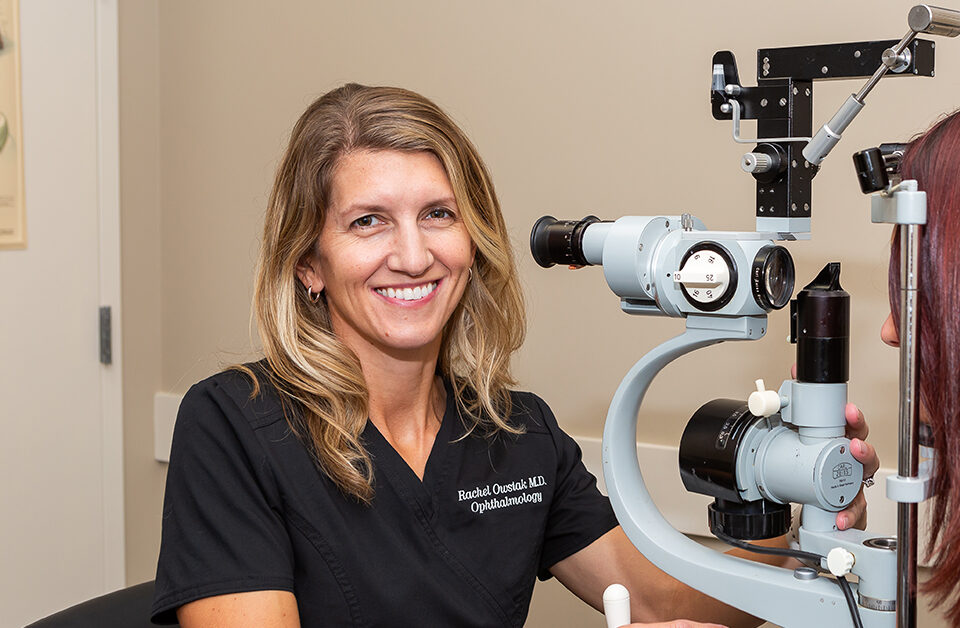
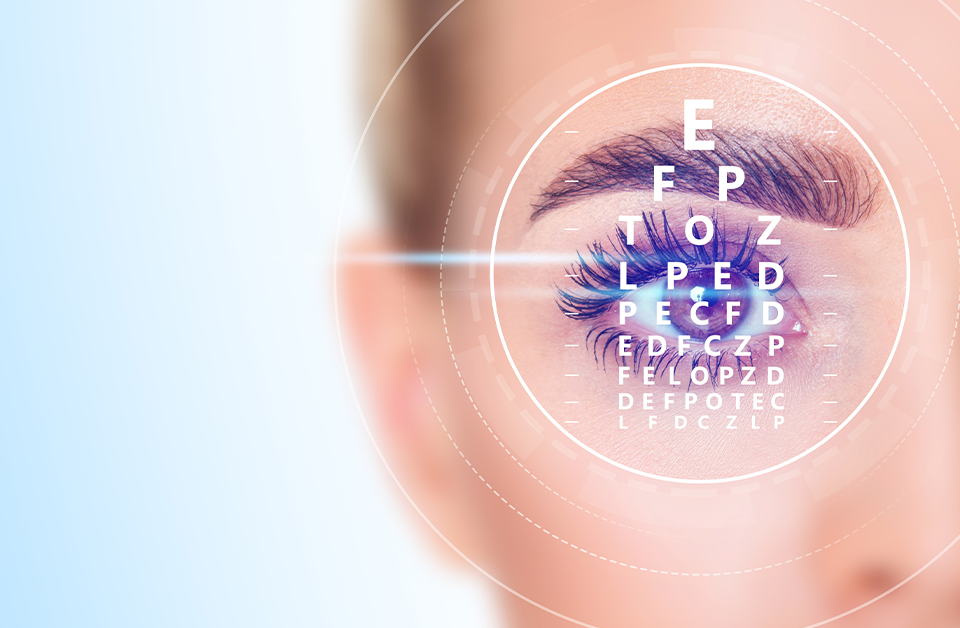
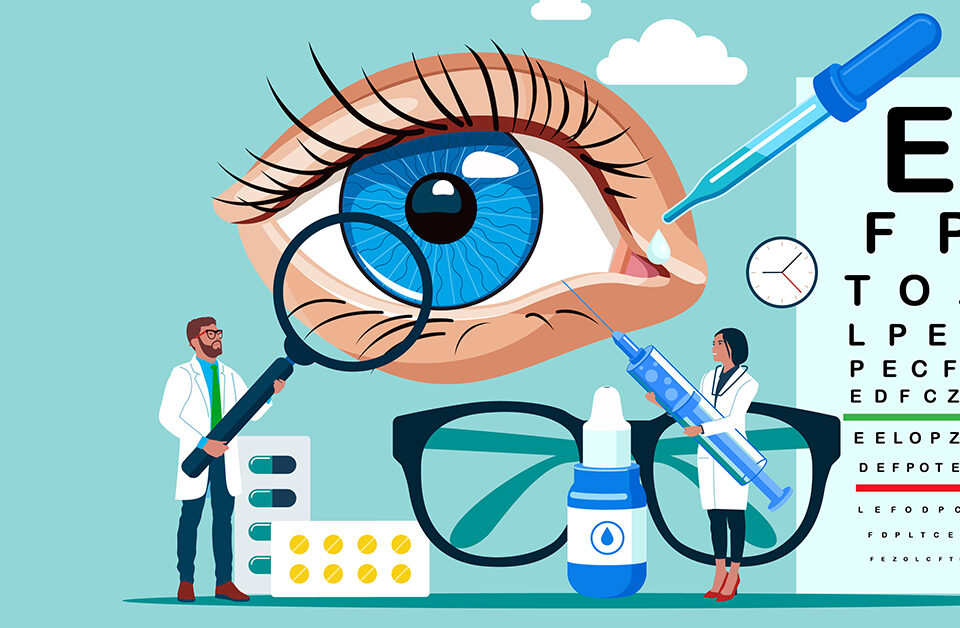
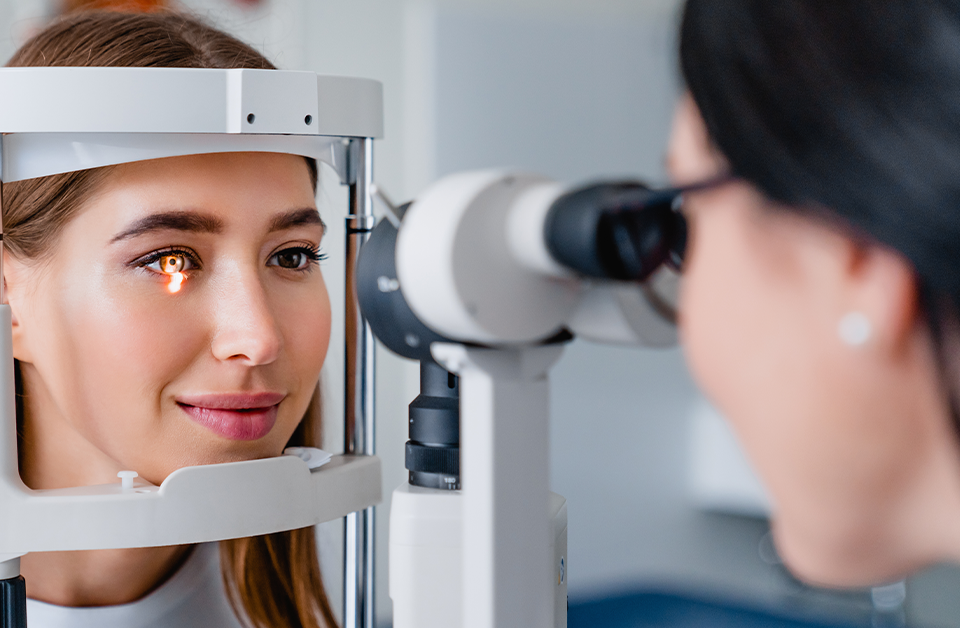
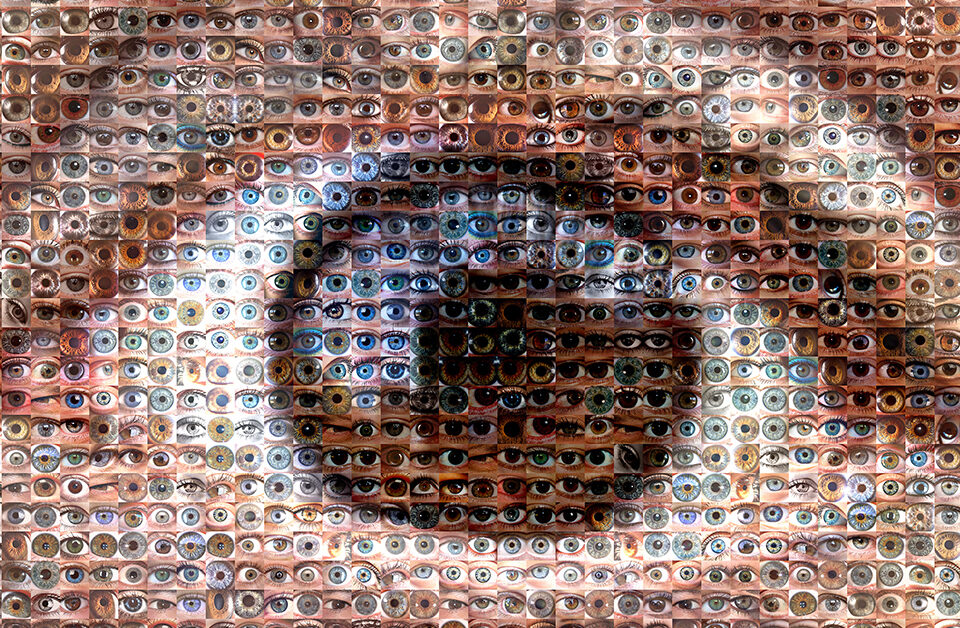
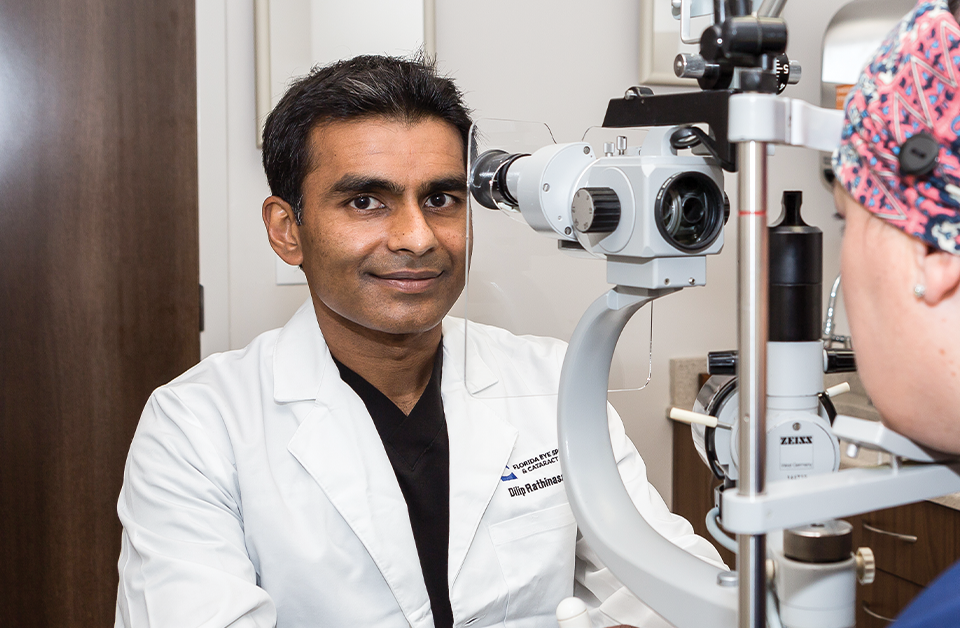
Leave a Reply